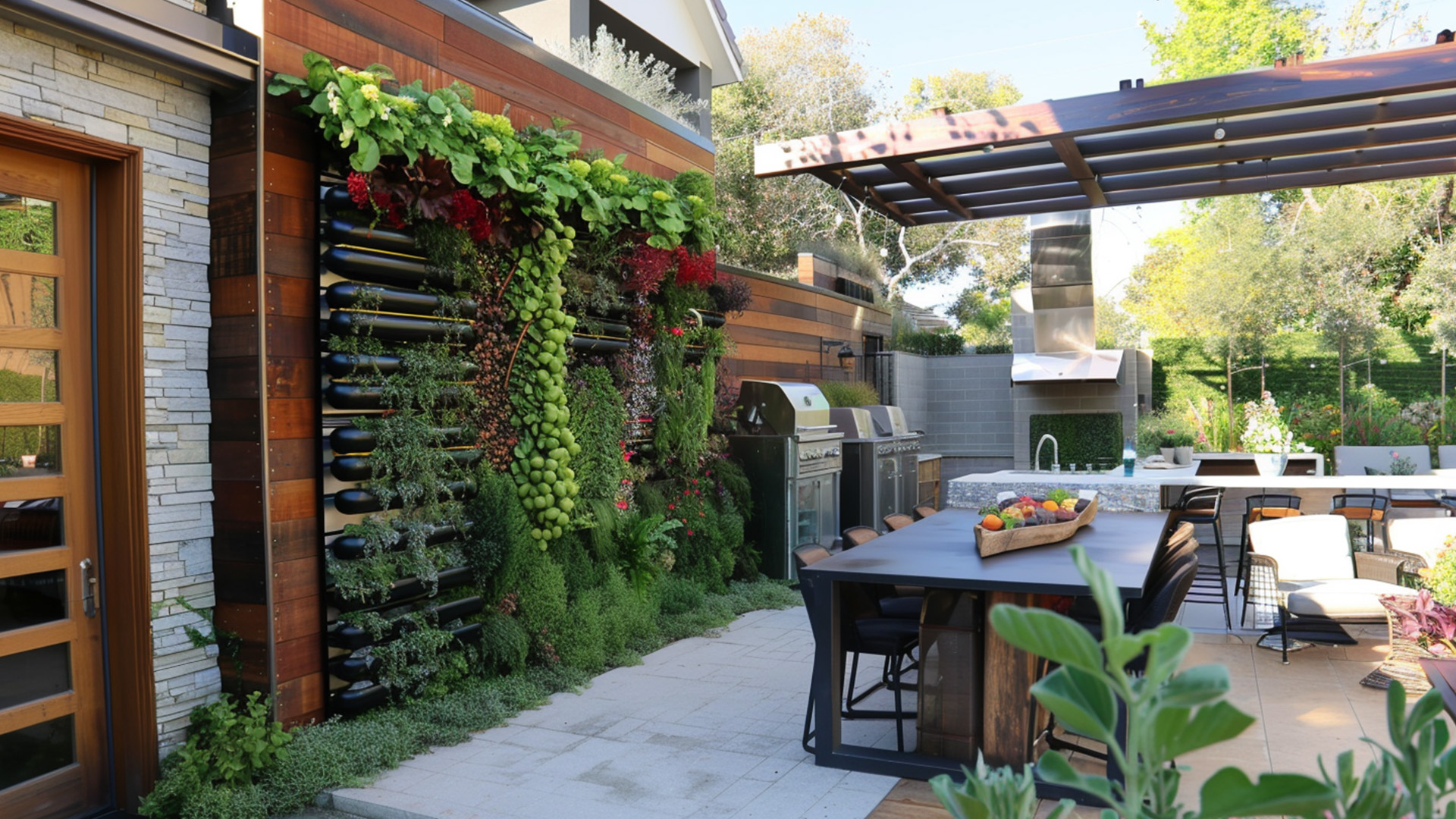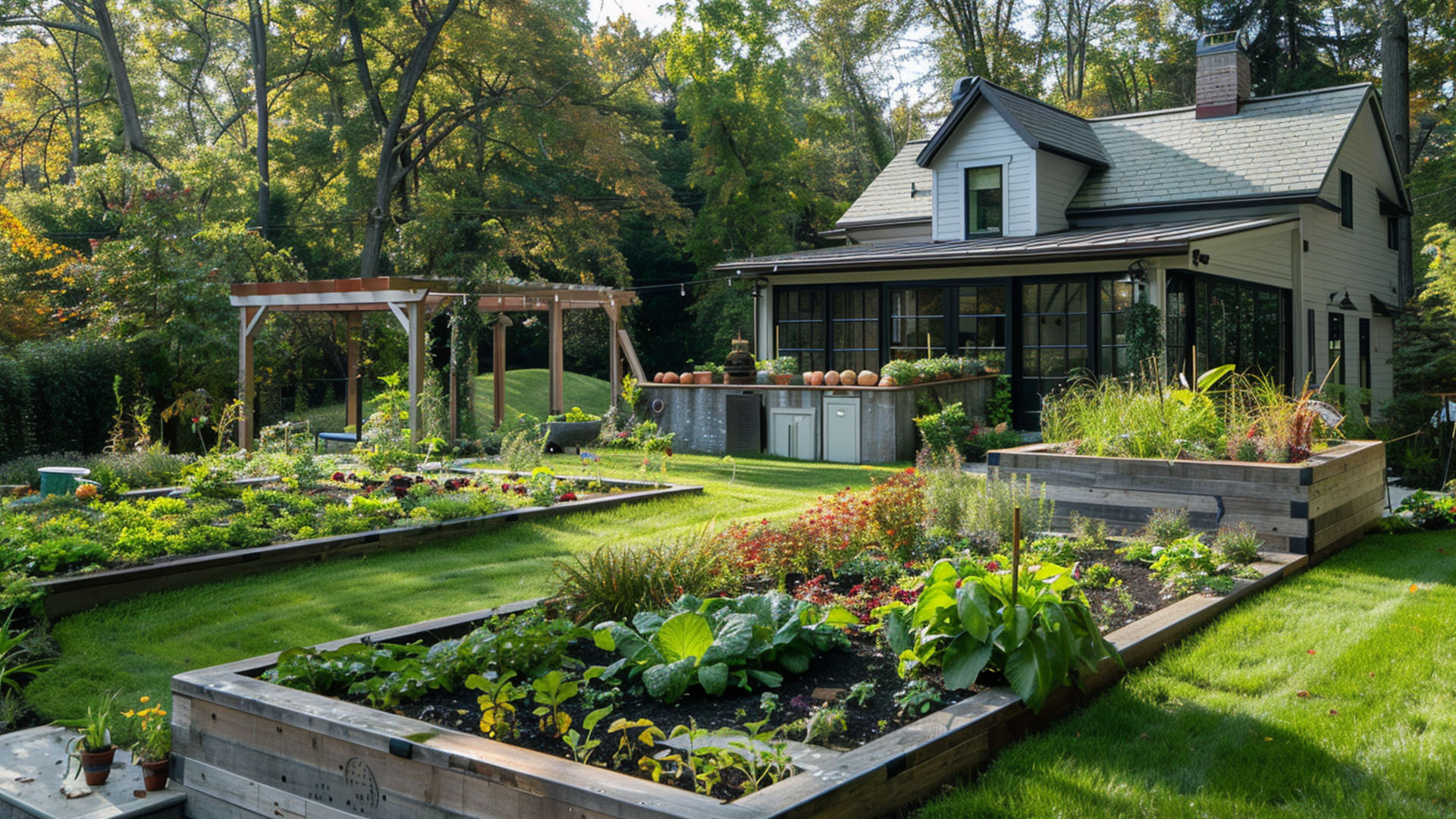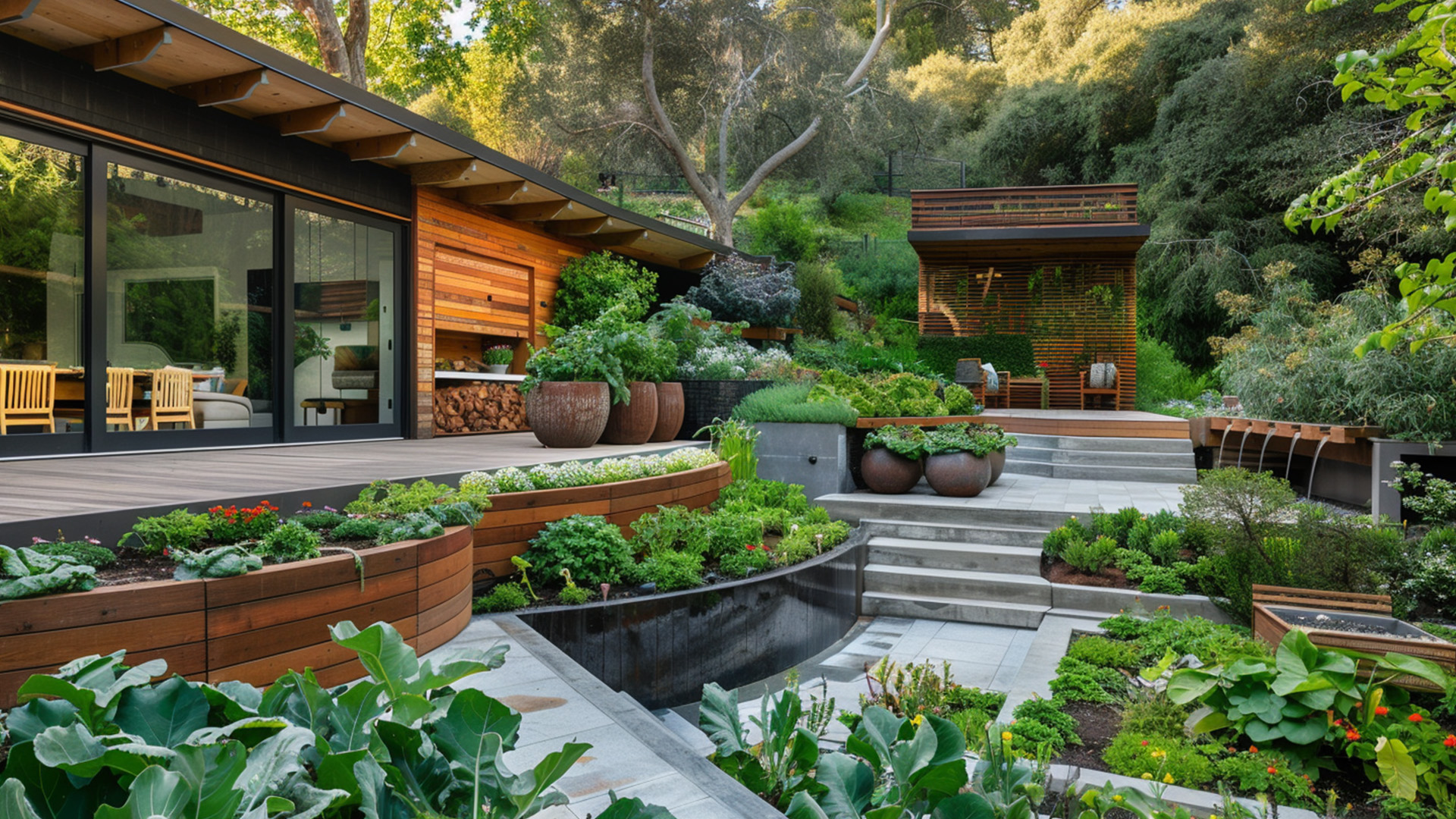In recent years, edible gardens have surged in popularity as a key feature in modern landscaping. Gone are the days when growing fruits, vegetables, and herbs was limited to hidden corners of the backyard. Today, edible gardens are designed to be as visually appealing as they are functional, seamlessly blending with ornamental plants and hardscaping to create beautiful, sustainable, and productive outdoor spaces.
Whether you’re looking to embrace a sustainable lifestyle, create a visually appealing garden, or simply enjoy fresh produce right at your doorstep, an edible garden offers the perfect balance of aesthetics, practicality, and environmental benefits. Let’s explore how edible gardens are shaping modern landscaping, their benefits, and how you can incorporate them into your outdoor space.
1. Aesthetic Appeal: Designing with Edible Plants
Edible plants aren’t just practical—they can also be stunning additions to your landscape. Many fruits, vegetables, and herbs have attractive foliage, blooms, and textures that make them excellent choices for ornamental gardens. By integrating these plants into your landscape, you can create a lush, vibrant garden that’s both eye-catching and productive. Here are a few design ideas for incorporating edible plants into your landscape:
- Herb Borders and Pathways: Herbs like rosemary, thyme, and lavender not only provide a fragrant aroma but also add texture and color to garden borders. These low-maintenance plants can be used to line pathways or define garden beds, offering both aesthetic and culinary value.
- Edible Hedges: Fruit-bearing shrubs such as blueberry, currant, or gooseberry bushes can be used to create beautiful hedges that also yield delicious produce.
- Vertical Gardens: If space is limited, vertical gardening techniques using trellises, wall planters, or climbing plants like peas, beans, or cucumbers can add height and interest to your garden while maximizing growing space.
- Mixed Planting: Blend ornamental flowers with vegetables and herbs to create a visually diverse and engaging garden. For example, pairing vibrant marigolds with leafy greens or colorful peppers can add pops of color while promoting beneficial insect activity.
2. Sustainability: Reducing Environmental Impact
One of the biggest draws of edible gardens is their role in promoting sustainability. By growing your own food, you reduce the carbon footprint associated with transporting produce from farms to stores. Additionally, edible gardens encourage organic practices, such as using natural fertilizers and pest control methods, which contribute to a healthier ecosystem. Here are some ways edible gardens enhance sustainability:
- Water Conservation: Many edible plants, especially native varieties, require less water than traditional lawns or purely ornamental gardens. By incorporating drought-tolerant edible plants into your landscape, you can conserve water while still maintaining a thriving garden.
- Soil Health: Growing a variety of plants in an edible garden can help improve soil health by promoting biodiversity. Edible gardens often utilize crop rotation and companion planting, which contribute to soil fertility and reduce the need for synthetic fertilizers.
- Waste Reduction: Edible gardens encourage composting, which helps minimize food waste and provides natural nutrients to the soil. Instead of discarding kitchen scraps, they can be composted and used to enrich the garden soil.

3. Practicality: Growing Your Own Food
The most obvious benefit of an edible garden is the ability to grow fresh, organic produce right in your own backyard. Whether you’re growing herbs for cooking, vegetables for daily meals, or fruits for snacking, the convenience and cost savings of having a homegrown harvest are undeniable.
- Healthier Eating: Having access to fresh produce encourages healthier eating habits, as it’s easier to incorporate fruits and vegetables into your diet when they’re readily available. Plus, the satisfaction of growing your own food adds a personal connection to the meals you prepare.
- Seasonal Eating: Edible gardens allow you to grow and eat seasonally, which ensures that your food is fresh, nutritious, and flavorful. Growing seasonal produce also helps you connect with nature’s cycles, fostering a deeper appreciation for the changing seasons.
- Family Engagement: Edible gardens can be a great way to involve the whole family in outdoor activities. From planting to harvesting, gardening teaches children valuable skills about nature, sustainability, and healthy eating.
4. Tips for Creating Your Own Edible Garden
Designing an edible garden that balances aesthetics and practicality requires some planning. Here are a few tips to get started:
- Start Small: If you’re new to edible gardening, start with a small garden bed or container garden. Choose easy-to-grow plants like herbs, lettuce, tomatoes, or strawberries to build your confidence.
- Plan for Sunlight: Most edible plants need plenty of sunlight to thrive. Choose a sunny location in your yard where your plants will get at least six hours of direct sunlight per day.
- Use Raised Beds: Raised beds are a great option for edible gardens because they provide better drainage, control over soil quality, and easy access for planting and harvesting. They also help define the garden space, giving it a clean and organized look.
- Integrate Companion Planting: Companion planting involves growing plants that benefit each other when grown together. For example, basil planted near tomatoes can enhance their flavor and help deter pests, while marigolds can attract beneficial insects.
- Add Functional Features: Incorporate functional elements like rain barrels for water collection, compost bins for organic waste, and irrigation systems to make garden care more efficient and eco-friendly.

5. The Future of Edible Gardens in Landscaping
As the demand for sustainable living continues to grow, edible gardens are expected to become a lasting trend in modern landscaping. More homeowners are recognizing the value of using their outdoor spaces not only for relaxation and entertainment but also for food production. By blending edible plants with traditional landscape design, you can create a multifunctional space that reflects your values and lifestyle.
Incorporating edible gardens into your landscape design is a rewarding way to beautify your surroundings while contributing to a more sustainable and healthy way of living. Whether you have a large backyard or a small balcony, there’s always room for growing fresh produce that enhances both your meals and your landscape.
Conclusion
Edible gardens offer a harmonious balance between aesthetics, sustainability, and practicality, making them an excellent addition to modern landscapes. By thoughtfully designing with edible plants, you can create a beautiful outdoor space that not only looks good but also serves a functional purpose. Whether you’re looking to reduce your environmental impact, enjoy the benefits of homegrown produce, or create a unique and engaging garden, an edible garden can transform your landscape into a vibrant, productive space that nourishes both the body and soul.
